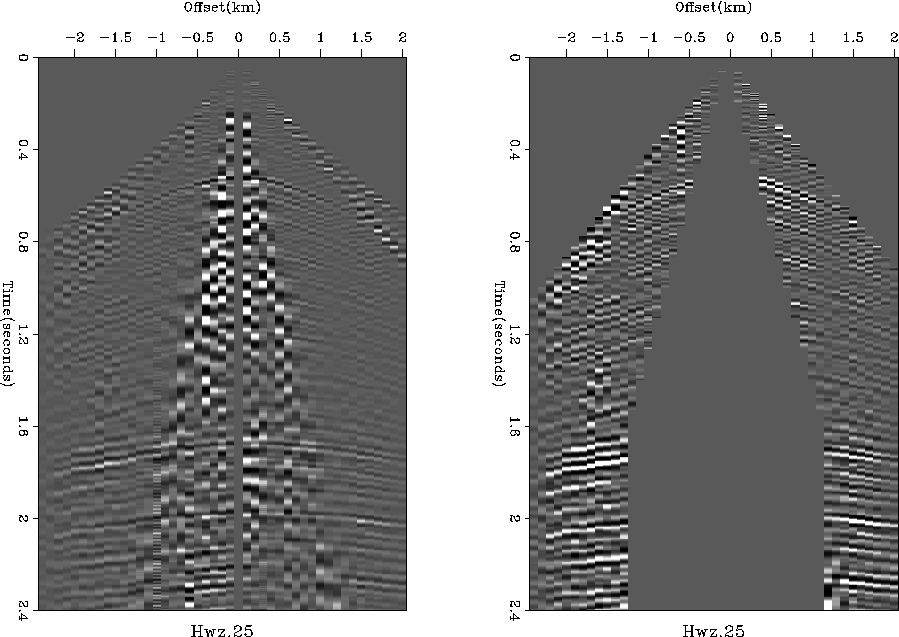 |
Figure 3 Left is a land profile from Alberta (Western Geophysical). On the right it is muted to remove ground roll (at center) and head waves (the first arrivals).
An important part of conventional processing is the definition of a mute. A mute is a weighting function used to suppress some undesirable portions of the data. Figure 3 shows an example of a muted field profile.
 |
Weights and mutes have a substantial effect on the quality of a stack. So it is not surprising that in practice, they are the subject of much theorizing and experimentation.
Often the mute is a one-dimensional function of ![]() .Reasons can be given to mute data at both large and small values of r.
.Reasons can be given to mute data at both large and small values of r.
At small values of r, energy is found that remains near the shot, such as falling dirt or water or slow ground roll.
At large values of r, there are problems with the first arrival. Here the NMO stretch is largest and most sensitive to the presumed velocity. The first arrival is often called a head wave or refraction . Experimentally, a head wave is a wave whose travel time appears to be a linear function of distance. Theoretically, a head wave is readily defined for layered media. The head wave has a ray that propagates horizontally along a layer boundary. In practice, a head wave may be weaker or stronger than the reflections. A strong head wave may be explained by the fact that reflected waves spread in three dimensions, while head waves spread in only two dimensions.
Muting may be regarded as weighting by zero. More general weights may be chosen to produce the most favorable CDP stack. A sophisticated analysis would certainly include noise and truncation. Let us do a simplified analysis. It leads to the most basic weighting function.
Ordinarily we integrate over offset along a hyperbola.
Instead, think of the three -dimensional problem.
You really wish to integrate over a hyperbola of revolution.
Assume that the hyperboloid is radially symmetric.
Weighting the integrand by h allows the usual line integral to simulate
integration over the hyperboloid of revolution.
A second justification for scaling data
by offset h before stacking is that
there is less velocity information near zero offset,
where there is little moveout,
and more velocity information at wider offset
where ![]() is larger.
is larger.